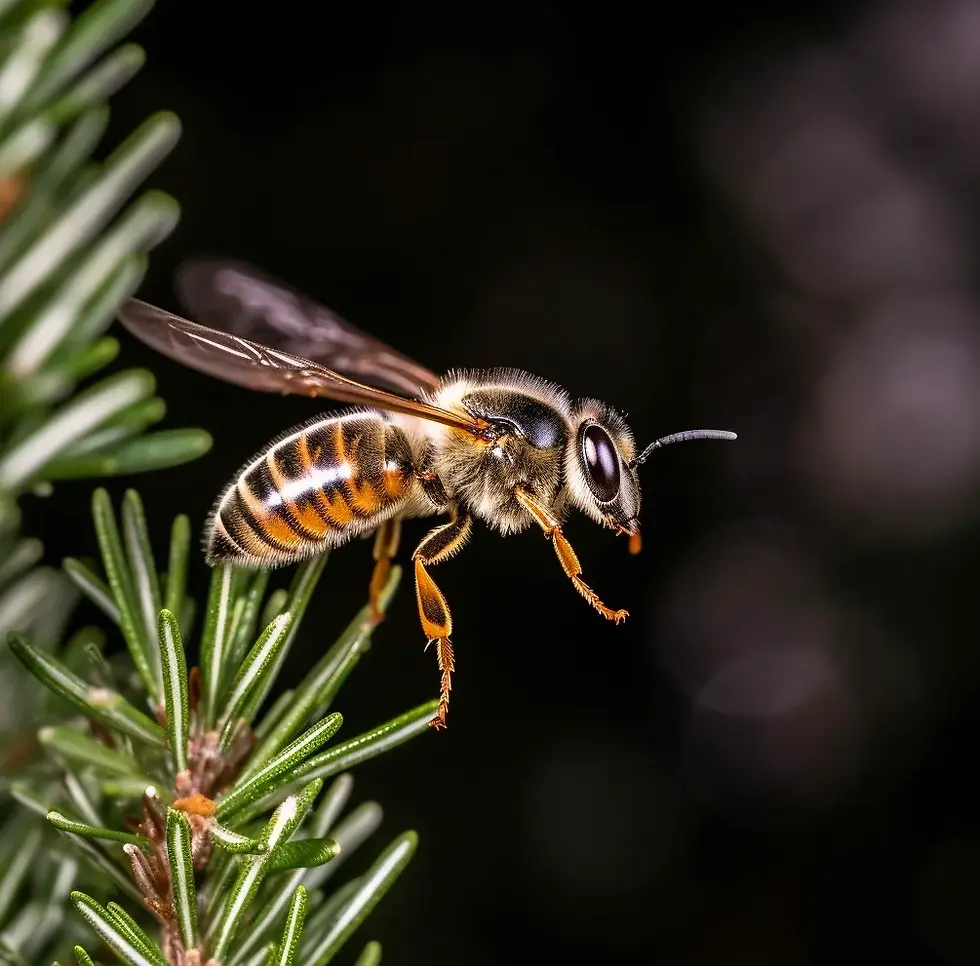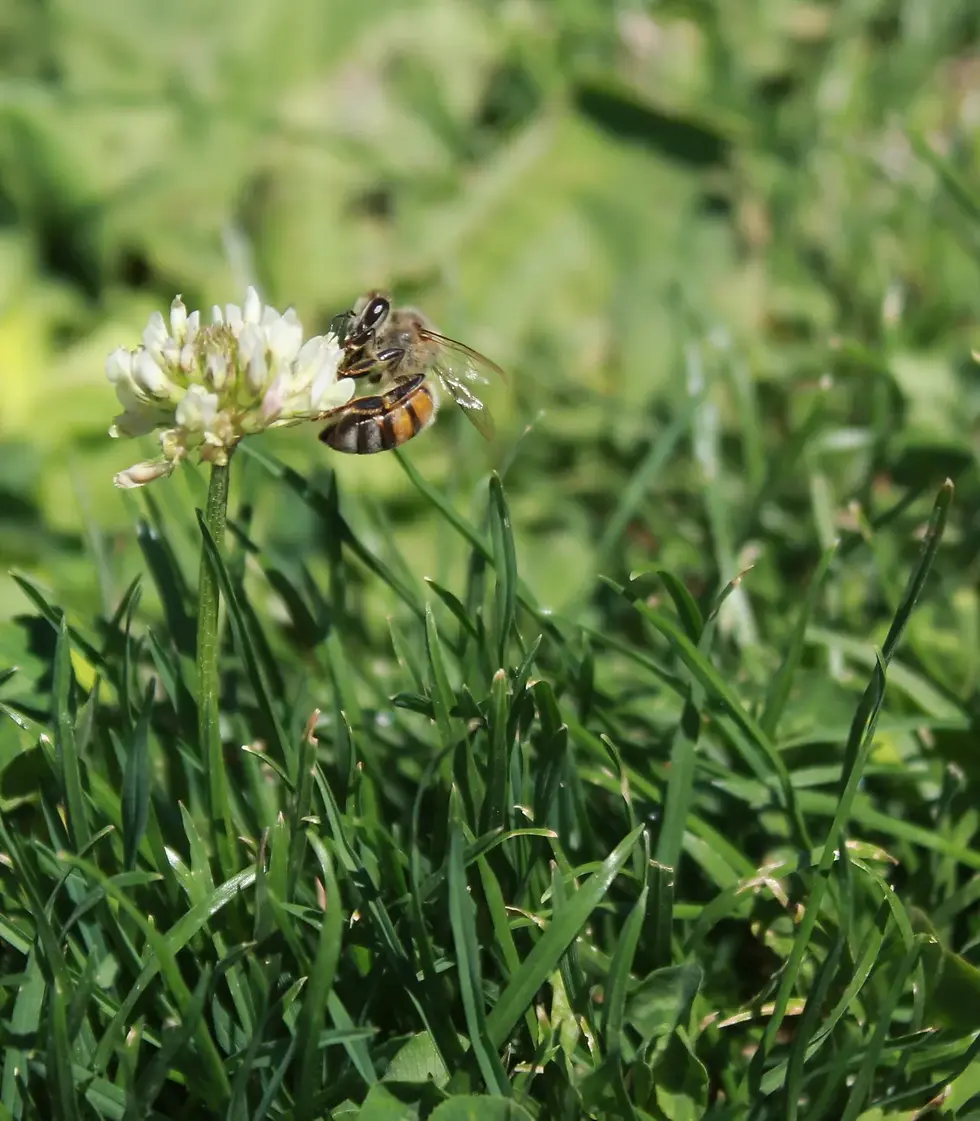How Fast Do Bees Fly and the Mystery of Their Flight Speed
- Pete Rizzo

- Oct 1, 2023
- 4 min read
Updated: May 5

The Mysteries of Honey Bee Flight Speed. How Fast is a Bee? 15 to 20 Miles Per Hour!
Key Takeaways and the Physics of Bee Flight:
Bees can fly up to 20 mph, the average being around 15 mph, but if they have a load of pollen, it is closer to 12 mph.
Defying Physics: Despite their small body size and wing area, bees can generate enough lift to fly, thanks to their unique wing-flapping techniques.
High-Speed Imaging: Advanced imaging techniques have revealed that bees alter the angle of their wings to create micro-vortices and pockets of low pressure, enabling them to stay aloft.
Rapid Wing-Flapping: Bees can flap their wings at an astonishing rate of up to 230 beats per second.
Bees are a familiar sight as they zip from flower to flower in gardens, parks, and fields. But have you ever wondered exactly how fast they can fly? Their speed is astonishing for such tiny creatures.
Today, we're going to dig deeper into the intricacies of bee flight and the survival advantages that speed offers these essential pollinators. So, let's embark on this fascinating journey to unravel the mysteries of bee flight speed!
Decoding the Physics of Bee Flight
The aerodynamics of bee flight have long puzzled researchers. Based on their body size and wing area, basic physics dictated that bees should not be able to generate enough lift to fly. Yet, they clearly possess advanced flight capabilities that defy our understanding.
Thanks to high-speed imaging, we now know that bees alter the angle of their wings on each stroke. This creates micro-vortices and pockets of low pressure that produce the lift needed to stay aloft.
Their rapid wing-flapping—up to an astonishing 230 beats per second—generates the force required for their aerial abilities.
What's even more mind-blowing? Bees can fly in any direction—even upside down! Their specialized flight musculoskeletal and respiratory systems enable these maneuvers that defy physics. Isn't that just incredible?

Measuring How Fast Do Bees Fly
Scientists have been hard at work trying to quantify the maximum flight speeds that different bee species can achieve. Here's what they've found:
Honeybees: The most studied species can fly at speeds of 15-20 mph when unladen. When worker bees are carrying nectar or pollen, they average about 12 mph. It seems like the 15 miles per hour mark is spot on from what we see daily in our beekeeping adventures.
Bumblebees: These larger and less aerodynamic bees max out around 6-7 mph. However, their strength allows them to carry heavier loads, making them equally impressive.
Stingless bees: Some tropical stingless bee species have been clocked at nearly 25 mph using radar tracking. Talk about speedsters!
Orchid bees: Male orchid bees may reach speeds of up to 24 mph in their quest for mates. Their rapid speed aids in successful reproduction.
So, believe it or not, honey bees can fly at speeds roughly equivalent to the average human jogging speed! Given their tiny size, this is an astounding feat that deserves our admiration. It is said that the queen bee flies around 10-15 miles per hour, but we have never seen one fly yet.
How Speed Enables Survival
Bees didn't evolve to fly rapidly just for the sake of efficiency. Speed is a matter of survival and optimal hive functioning:
They can escape predators like wasps, birds, and spiders using evasive maneuvers at high speeds.
Speed allows them to cover more ground to find scattered resources like pollen and flower nectar.
It also enables bees to return to the hive before nightfall, even when they've ventured far away.
Their unique "waggle dance" communication relies on speed to indicate both direction and distance to food sources. As a beekeeper, this dance is always so cute to watch.
How far do bees fly depends on how far the food or water source is. It could be up to 5 miles from their beehive.
Overall, speed provides bees with advantages that enhance the prosperity of the colony. It's yet another example of their incredible evolutionary adaptations that leave us in awe. Us beekeepers are always surprised by these speedy fliers.

Appreciating the Complexity of Bees
When you hear the distinct buzz of a bee whirling past, take a moment to watch the remarkable speed and agility of its flight.
We now understand that this is enabled by sophisticated aerodynamic mechanisms and powered by specialized physiological traits.
When we explore the profound complexities of bees, it deepens our commitment to protecting these essential pollinators that play such a vital role in ecosystems.
Betsy and Pete
Las Vegas, Nevada
About Us

We're Betsy and Pete, passionate Las Vegas beekeepers trained by a master in the field. With hundreds of successful bee and bee swarm removals under our belts, we're not just experts; we're enthusiasts committed to the well-being of these incredible pollinators.
We manage dozens of beehives, both natural and honey-bearing at our Joshua Tree Preserve.
Our Commitment to Excellence
Education is an ongoing journey, especially in a dynamic field such as beekeeping. That's why we continually update our knowledge base, collaborate with other experts, and stay up to date with the latest advancements in bee control methods and beekeeping practices.
We also provide top-tier beekeeping supplies, offering everything a beekeeper needs, from beginners to experts.
.png)


